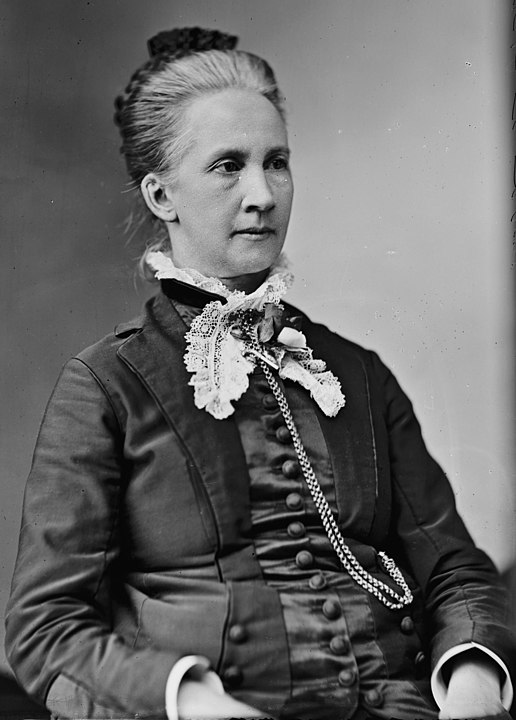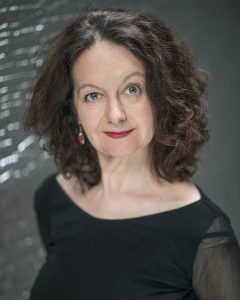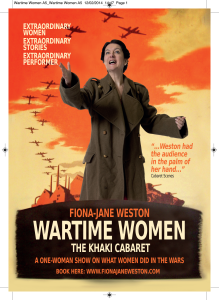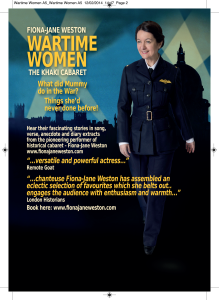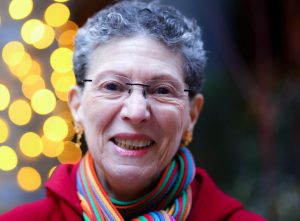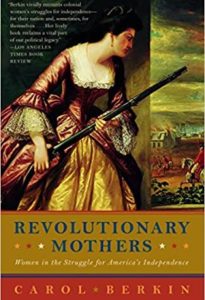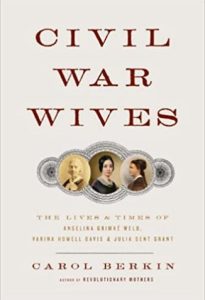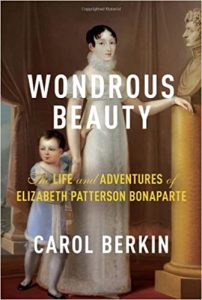Belva Lockwood: a guest post by Jack French
Once or twice a year, long-time friend of the Margins Jack French reaches out with an interesting story and an offer to share. I've learned to say yes. Whether it's the woman who invented Monopoly, a pair of WASP pilots, or a book recommendation, it's always worth reading, and it's often appropriate for Women's History Month. He's back, with another story of a woman I hadn't heard of before. (I can't tell you more without spoilers.)
Take it away, Jack!
Belva Ann Bennett was born October 24, 1830 into a modest farm family in Royalton, NY. Her parents apparently had a penchant for quirky names as two of Belva’s four siblings were named Cyrene and Inverno. In that pre-Civil War era, women were barred from nearly all professions (medicine, law, dentistry, banking, federal employment, etc.) but Belva would rise from her humble beginnings to become the first woman lawyer to argue in the Supreme Court and also the first woman to legitimately run for U.S. president….twice!
Despite her ambitions as a teenager, Belva was virtually limited to three options: domestic service, teaching, or getting married. She originally chose the latter two. At age 14 she accepted a teaching position, where she resented being paid half of what her male counterparts received for doing the identical work. In 1848 she married Uriah McNall, four years her senior.
The couple were farmers and also ran a small mill. They had one daughter before her husband died of injuries from a mill accident. The young widow sold the mill, and now, convinced that education would improve her lot, enrolled in college in Lima, NY, graduating in 1857. However she then had difficulty in finding a suitable position and was forced to accept a teaching job, again at half the salary of male teachers.
Later she became acquainted with both Susan B. Anthony and Dr. Mary Walker, and Belva would remain a champion of women’s rights as long as she lived. Anthony convinced her to move to Washington, DC for better prospects. By then Belva had aspirations of becoming a lawyer. In the Nation’s Capital, she met and married Ezekiel Lockwood in 1868. A 65 year old dentist, he was four years older than her father. But he was a loving husband and fully supported her quest for a law career. They resided in D.C. and operated a rental agency.
After being turned down at several East Coast law schools because of her gender, Belva fortunately found a new law school locally which admitted women on a limited basis: the National Law University in D.C. (which years later would merge into George Washington University.) In early 1871, National Law University accepted 15 women as students, but only two of them would eventually graduate: Lydia Hall and Belva Lockwood. However the institution refused to award them their diplomas.
Both successfully passed the three day exam (oral and written) for the D.C. bar, but since they had no diplomas, they were not admitted. Belva boldly wrote a personal letter to President Ulysses Grant, who was the honorary president of the university, requesting her diploma be released to her. It worked. Two weeks later her law diploma was in her hands and she was admitted to the D.C. bar on September 24, 1873, the second woman to achieve that distinction. The first was Charlotte Ray, the daughter of a nationally prominent African-American minister and publisher. She was admitted to the D.C. bar in 1872, shortly after graduating from Howard University Law School. However so few people would engage a woman of color as their attorney, Ray had to give up her practice and become a teacher.
Lockwood was moderately successful in her law practice, but some of her cases required argument in the Court of Claims, which had a separate bar. It would take Belva years of struggle to achieve that goal. Although she succeeded in getting a hearing to the bar of Court of Claims, it was a painful experience. After a lengthy discussion before a panel of five judges, she was told by the presiding judge: “Mistress Lockwood, you are a woman!” Later Belva would write: “For the first time in my life I began to realize that it was a crime to be a woman, but it was too late to put in a denial and I at once pleaded guilty to the charge.”
After weeks of deliberation the bar association concluded “A woman is without legal capacity to take the office of attorney” and therefore her request for admission was denied. However Belva was not to be stopped. She poured over the Supreme Court’s rulings on such matters, one of which concluded that any attorney in good standing before the highest court of State or Territory for three years shall be admitted to that court when presented by a member of the bar. But when the three years were up for her, she was still denied bar admission unless there was legislation for such approval. During this time, Ezekiel died in April 1877, leaving her a widow again.
But Belva then became a lobbyist in her own behalf. She located friendly faces in Congress, gave speeches, found allies in the press, and uncovered weak spots in her opposition. Her two year relentless campaign was successful. The bill admitting women to the Supreme Court bar was signed into law on February 7, 1879. Three weeks later, she became the first woman to be admitted to the bar of the Supreme Court.
Her astonishing victory opened the legal doors to all women in local, state, territory, and federal courts. Elizabeth Cady Stanton extolled her triumph, dubbing her a true “Portia”, Shakespeare’s brilliant lady lawyer. Her legal business continued to thrive. Very late in life she would be on the team whose arguments in the Supreme Court resulted in a multi-million dollar award for the Cherokee Nation.
In 1884 she consented to be the Presidential nominee for the Equal Rights Party, thus becoming the first woman to run for that office. “I can’t vote, but you can vote for me” was one of her slogans. Some of the press treated her fairly but others preferred lampooning her in cartons. She lost to Grover Cleveland, but four years later she ran again, this time defeated by Benjamin Harrison.
She continued her legal practice and pushed for women’s suffrage until she died at the age of 86 in 1917, just three years short of being able to vote. Sadly, the history books have ignored her, despite her impressive accomplishments. As her biographer, Jill Norgren, explains, there is “…a preference in history for Founding Fathers and fighting generals…”
PRIMARY SOURCES:
Belva Lockwood: The Woman Who Would be President by Jill Norgren, (New York University Press, 2007)
“Struggles and Accomplishments of Belva Lockwood” (2011) by Maryann Freedman, https://buffaloah.com/h/lock/lock.html
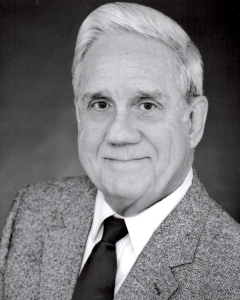 Jack French is a researcher, feminist, and author in Northern Virginia; his website is: http://www.jackfrenchlectures.com/ His book, Private Eyelashes: Radio’s Lady Detectives (Bear Manor Media, 2004) won the Agatha Award for Best Non-Fiction and was voiced as a Talking Book by the Library of Congress.
Jack French is a researcher, feminist, and author in Northern Virginia; his website is: http://www.jackfrenchlectures.com/ His book, Private Eyelashes: Radio’s Lady Detectives (Bear Manor Media, 2004) won the Agatha Award for Best Non-Fiction and was voiced as a Talking Book by the Library of Congress.
***
Women's History Month isn't over yet! Come back on Monday for Three Questions and an answer with Julia Scheeres, co-author of Listen, World!
Talking About Women’s History: Two Questions and an Answer with Carol Berkin
Carol Berkin is Presidential Professor of History, Emerita, of Baruch College & The Graduate Center, CUNY. She received her B.A. from Barnard College and her PhD from Columbia University where her dissertation received the Bancroft Award in 1972. She has written extensively on women’s history and on the American Revolution, the creation of the Constitution, and the politics of the early Republic. Her books include Jonathan Sewall: Odyssey of an American Loyalist [Columbia University Press] which was nominated for the Pulitzer Prize; co-editor of Women of America: A History [Houghton Mifflin & Company], the first published collection of original essays in American women’s history; First Generations: Women in Colonial America [Hill & Wang]; A Brilliant Solution: Inventing the American Constitution [Harcourt], awarded the Colonial Dames of America Book Prize; Revolutionary Mothers: Women in the Struggle for American Independence [Knopf]; Wondrous Beauty: The Life and Experiences of Elizabeth Patterson Bonaparte [Knopf] ; The Bill of Rights: The Struggle to Secure America’s Liberties [Simon and Schuster]; and most recently, A Sovereign People: The Crises of the 1790s and the Birth of American Nationalism. She has appeared in over a dozen documentaries on colonial, revolutionary, and civil war history, given lectures on her specialties at major universities in the United States and England, and participated in faculty development across the country under the U.S. Department of Education’s Teaching American History Grant Program. She has directed summer institutes for The Gilder Lehrman Institute of American History, Mount Vernon, and the NEH. She has served on the board of the National Council for History Education, the Staten Island Historical Society, and the Society of American Historians and on the Scholars Board of the New-York Historical Society’s Center for the Study of American women. She is a frequent participant in the New-York Historical Society’s lecture series, and is also the editor of the Gilder Lehrman online journal, History Now. Her favorite pastime is doting on her three grandchildren, Talulla, Noa, and Asher.
All I can say is, wow! Take it away, Carol!
You’ve written about a lot of interesting women. Do you have a favorite?
I am especially glad I had the chance to write about Elizabeth Patterson Bonaparte whose story I told in my book Wondrous Beauty: The Life and Adventures of Elizabeth Patterson Bonaparte. Elizabeth – or Betsy as she was called-- was born in the late 18th century, the daughter of a wealthy Baltimore merchant, and she was by all accounts one of the most beautiful and brilliant women of her generation. She was restless and unhappy as a young woman, for she believed she belonged on a larger, less constricting and more sophisticated stage than the young republic had to offer a woman. She considered her native country a cultural backwater, its men consumed by money-making and its women content to live narrow lives as wives and mothers. She longed for the excitement and intellectual stimulation of European culture. Her discontent drove a wedge between her and her father whose rags to riches story left him obsessed with respectability and deeply socially conservative. At 17 Elizabeth’s wildest dreams came true: she met the youngest brother of Napoleon Bonaparte, an 18 year old naval officer who was visiting America. Jerome Bonaparte was, in fact, spoiled, selfish, and a womanizer but all she saw was his French manners and his charm—and her way to escape the mundane life of a genteel American woman. They married against her father’s wishes and, as they soon learned, against Napoleon’s as well. The emperor offered his brother an ultimatum: renounce this marriage, marry a member of the European nobility, and I will make you a king of one of the German territories I control , or, remain married to this commoner and I will disown you. Jerome Bonaparte chose option one, abandoning his young wife and her infant son without hesitation.
But this was far from the end of Betsy’s story. She pulled herself together, refused to ever depend on a man again, dared to take herself alone to Paris and London and later to Italy and Switzerland—breaking all the rules for well -behaved elite American women! Men fell in love with her by the dozens but she never considered marrying any of them. Instead, after becoming the belle of French literary salons—admired not only for her beauty and wit but her intelligence, she discovered to her delight that she did not need to bask in the light of a man; she could achieve her goals independently. Unfortunately, she focused most of her emotional energies on a long campaign to force the Bonaparte family to acknowledge her son and only child as a legitimate heir to the French imperial throne. For decades she pursued this dream, despite her son’s lukewarm response to her vision of a life among the royalty of Europe. In the end she failed, rejected by the Bonaparte heirs and, in her eyes, betrayed by her son who married an American heiress and settled contentedly into the bourgeois world of the US that she so despised.
Betsy’s only other consuming passion was financial independence and she proved to be a shrewd business woman and investor. She became the first self-made female millionaire of the 19th century, ironically engaging in exactly the money-grubbing she condemned in her father and American businessmen in general. In older age she returned to Baltimore, where she made clear her continued rejection of female domesticity; she refused to set up housekeeping in any of the properties she owned. She lived until her 90s in a rented room., surrounded by memorabilia and ball gowns from her days as the belle of Paris and Florence. She grew increasingly bitter and eccentric and could be seen, carrying her parasol and a large handbag as she went door-to-door collecting the rents from tenants in her many properties. Yet she retained her beauty and her wit. When she was 94 a local newspaper reporter visited her and wrote that she remained a “wondrous beauty.” She died soon afterward, refusing to be buried in the Patterson family cemetery. As she wrote: “I have lived alone and I will die alone.”
Many readers of my biography disliked Elizabeth Patterson Bonaparte. They consider her selfish and cold, and they see her life as a tragedy marked by her obsession with elevating her son to the throne. But I admired her. Imagine what it took to carve an independent path as a genteel woman in late 18th and pre-civil war America! She fulfilled her dreams, all on her own. She unleashed her intellectual talents, outdid her father and brother’s financial skills, traveled widely on her own when this was considered scandalous in America, and did not succumb to the many appeals by men to marry and be “taken care of.” She was witty, brilliant, and valued her mind over her looks. Her faults were many, but her strength of character allowed her to defy her moment in time and place and live as an individual rather than be defined by the female roles of her day. I say, Brava for her!
What do you find most challenging or most exciting about researching historical women?
There is such satisfaction to be able to look into the mirror of the past and see a female face. [<<Emphasis Pamela's.] This is what the decades of women’s history since the 1970s has allowed me and sister colonial historians to do, and, I like to think, it has allowed young women of every generation since we began to reconstruct the American female past the same satisfaction. It was extremely challenging yet exciting in the early years; we were told we would not find any sources and, even if we uncovered some, they would tell us little about what was important about our 17th and 18th century beginnings. In fact, well -meaning male advisors urged us not to jeopardize our careers by diverting our attention to this irrelevant topic. To our delight we proved them wrong. Buried in the archives, under labels like “Miscellaneous Documents,” or in the papers of famous men as simply “Other material” were a treasure trove of diaries, letters, poems and accounts of white women’s lives during the centuries of settlement and Revolution that allowed the voices of women to be heard at last. Then, archeology and anthropology and computer skills began to let us write the stories of African American, Native American, and poor white women, few of whom left written records but whose collective portraits could at last be painted. Soon new ways of theorizing about women’s experiences and roles in their societies deepened our understanding. And a new interest in how men learn their gender roles grew out of our efforts to discover how female roles were inculcated and enforced. All of these developments were exciting. Slowly our profession has come to realize that old models of “what happened and why” had to be abandoned once women were seen as active agents in shaping our past. For example, my book, Revolutionary Mothers, joined earlier pioneer works in showing that the Revolution could not be adequately or accurately understood until women’s many roles in its unfolding were written into the narrative of the struggle for independence.
A question from Carol: In Alice Through the Looking Glass, the White Knight and Alice are living chess pieces on a chess board. Alice cannot understand why it is so hard to move across that board and win the game. The Knight explains to her that, sadly, in this world, you have to run twice as fast just to stay in the same place. What do you think can be done —or is being done —today to ensure that the fight for women’s equality will not be stuck running hard to stay in the same place?
That is the bazillion dollar question, isn’t it?
Ultimately, I think the answer is the same for women’s equality as it is for democracy in general: Don’t take what we have for granted. Don’t expect someone else to do the work.
Easy to type. Hard to do.
***
Come back tomorrow for three questions and an answer with cabaret performer Fiona-Jane Weston
